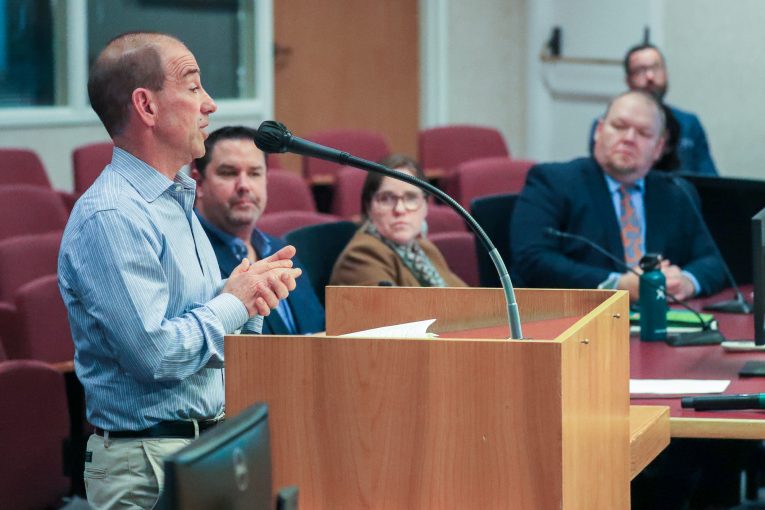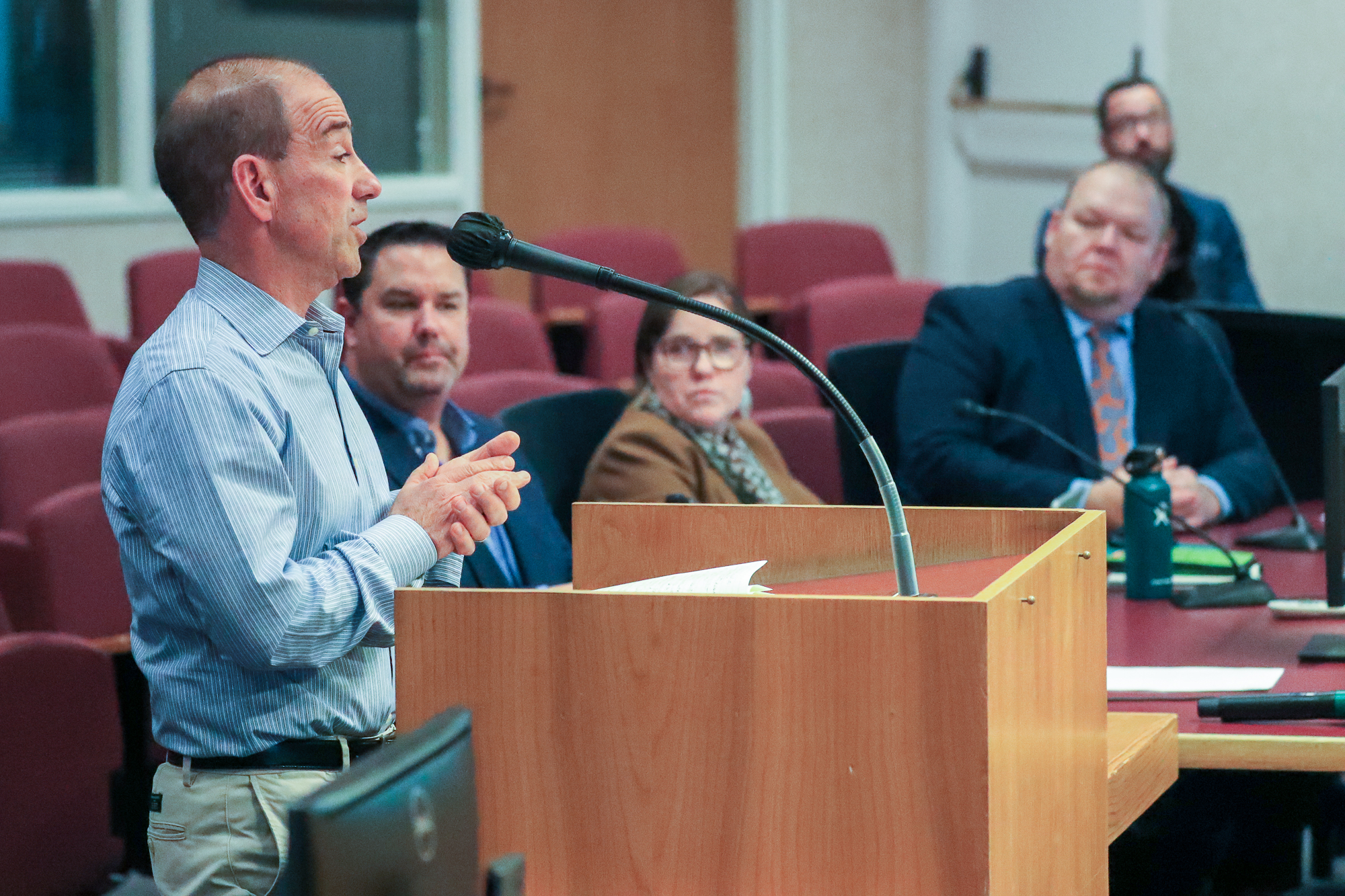

By David M. Greenwald
Executive Editor
Davis, CA – For years now the Vanguard has been warning about the impending problem of declining enrollment and the impact it will have on the school district and the broader community. This week, the Davis City Council received a report from DJUSD and the two entities vowed to work together.
As I have noted a number of times, declining enrollment presents unique challenges to school districts because funding is calculated by average daily attendance.
As Board Member Joe DiNunzio explained last week, when the enrollment is declining, “it’s a real challenge” as money declines. He explained that “we are operating right now with a relatively thin margin of budget. So it becomes an extraordinarily big economic challenge.”
If this were merely a one-time decline in enrollment, that would be one matter. The school district could close a school, cut staff, bite the bullet once and be okay.
But the problem here is a long-term downward trend that means that the district would have to be cutting most of the time. And as I have previously pointed out, that’s difficult to do and because of reverse economies of scale, the district would become less efficient and would only save about 60 cents on the dollar for each cut.
The resident student population has been declining for some time, but the total enrollment had been relatively stable pre-pandemic. That changed in the 2020-21 school year.
Superintendent Matt Best explained, “We know that our resident student numbers are declining and that’s masked by increasing non-resident students.”
But he later noted, “It wasn’t until the pandemic that the number of non-residents students stopped keeping up with the number of the decline of resident students.”
But as Joe DiNunzio put it, “We’re nearing a tipping point.” He said, “I think we are coming very close to the ceiling on the number of non-resident students we have. And if those numbers do in fact fall, then it’s going to have a huge impact on our ability to maintain the school system that we currently have.”
Some have suggested why not just eliminate the out-of-district transfers, downsize the schools and be done with it.
Leaving aside the fact that that would not solve the ongoing problem of decline, it’s not so simple.
That’s because of who the transfer students are—in primarily three categories. First, they are children of staff and faculty at DJUSD. Many of them can’t afford to live in Davis, but allowing them to enroll their children in the district is a huge draw for staff.
Second, they are the children of faculty at UC Davis. And third, they are students who started out living in Davis, whose families moved, but are entitled to remain at DJUSD.
So, what is causing all of this?
First, a reduction of births. The average births declined from about 603 to 417 between 2002 and 2021. A big part of that is the aging population of Davis because younger families cannot afford to move to this community.
And a big part of that is—you guessed it—housing.
The period of 2002 to 2021 happens to coincide with major changes in the housing market in Davis and the advent of the housing crisis. It is probably not coincidental that the decline began shortly after the passage of Measure J.
The presentation noted that there have been 902 city approved residential units planned within the next 5 years. But 81 percent are multi-family housing that do not house school age children.
Board Member Hiram Jackson explained that he asked the demographer whether “lower cost housing tend to bring more school going families than more expensive housing? And of course, his answer was yes, that was his experience.”
Jackson said, “I’m concerned that we’re bringing about an economic segregation in Davis. Basically, we’re pricing out lower income people or middle income people even.”
I guess the question then is this: does a decline in schools matter to this community?
Ultimately that is a question that the community is going to have to answer. But, overall, I think it does matter.
First of all, we have seen, since 2007, the community step up time and time again, willing to pay increasing amounts of a parcel tax to support quality education at DJUSD.
Second, as noted by Will Arnold, home values are primarily tied to the quality of the educational system.
Third, and I think this is a point that a lot of people are missing, there is the connection between UC Davis and the community. As UC Davis brings in young faculty each year, those are people of child-bearing age who are going to have children and want their children to receive a high quality of education.
Traditionally, faculty moved into Davis and helped populate our local schools. Fewer and fewer faculty are able to afford to live in Davis, particularly early in their career when they have school age children, but the district has compensated for that through transfers.
However, if funding declines, the quality of education will decline at the schools, and it might become more difficult to attract top young faculty to UC Davis.
Fourth, I think overall this community is more vibrant when we have families of all ages in addition to students, faculty, and long-time residents—and if our schools decline, our population of children declines, and we lose a lot of what makes this a great community.
If we plan well, we can do this in a way so that we keep the great things about this community, without growing too fast so as to see a loss of other facets that make this a great community—small town feel, open space, agricultural heritage.
This will all take a lot of smart planning and a lot of work.
But I fully agree that we are at a dangerous tipping point here. And if we don’t act now, we will lose a lot about what makes this a great community.


“…without growing too fast so as to see a loss of other facets that make this a great community – small town feel, open space, agricultural heritage.”
This is nonsense, by preserving ag-open space we must densify, losing the “small town feel.” This is why I say by preserving Davis through Measure J we are changing Davis.
One thing I missed in the presentation was what will the impact be from all the married student housing that is under construction on the south side of Russell?
I think we are committed to the model of our enrollment boundaries being children of residents of Davis, children of people who work in Davis, children of people who used to live or work in Davis, and children of any one who wants to drive their kids to Davis for school. With remote and hybrid work opportunities at UCD, parents will be less inclined to commit to driving their students to Davis every day if they are not coming to Davis themselves. When my children were in high school, DHS had younger siblings of UCD students showing up at the end of September to enroll, using their older siblings as guardians. Maybe this can be promoted more as a source of additional students to maintain enrollment.
I do wonder how long Davis property owners will be willing to tax themselves to pay for programs for students from other communities.
Your first paragraph and your last paragraph (copied above) consist of two different enrollment boundaries, for those living outside of Davis. And your thoughts behind them (therefore) conflict. Davis is either “committed” to paying for students beyond enrollment boundaries, or it’s not. Or, it’s committed to paying for “some” of them, but not others.
Don’t know if that’s true, or if it only applies to out-of-district students.
But perhaps the biggest reason that DJUSD foresees a potential drop in the number of students it poaches is because Spring Lake is getting closer to build out.
Ass with any community, existing housing does not turn over “fast enough” to satisfy school districts. That’s why DJUSD is advocating for continued sprawl. And they’ll continue doing so, regardless of what gets built. Again, because residents age out of the system pretty quickly, and people are having fewer kids in the first place.
Not sure if anyone has ever figured out “why” The Cannery (with its traditional single-family housing) didn’t provide enough “head count” to satisfy DJUSD – even when it was brand-new.
Though if/when the Woodland “technology center” (or whatever it’s called gets built), that will add another 1,600 housing units. The “problem” (as far as DJUSD is concerned) is that the technology center may have its own school, thereby impacting DJUSD’s “attractiveness” for those (future) occupants.
(I’m referring to the technology center in Davis, which failed before it even reached voters. And added 1,600 housing units during its 7-mile “move”.
Don’t understand this, but again – it’s the wrong goal.
It’s up to DJUSD to adjust, not the city it’s supposed to be serving. For the life of me, I don’t understand how that can even be “controversial”.
Sharla Cheney: ‘I do wonder how long Davis property owners will be willing to tax themselves to pay for programs for students from other communities.’
A bigger and related question, I’m thinking, is how much of an extra premium Davis residents are willing to pay to have people work in Davis for the jobs that require being in person if more of that workforce is living outside of Davis? And here I’m thinking staff that one would like on a longer term basis, like at least 3-6 years or longer. In the City Council discussion, it was mentioned that in recent years more new DJUSD employees (most of whom have to be in person several or all days of the week) are coming from out of the city. What is it like for such employees at UCD? City of Davis employees? University Retirement Center? Staff at grocery stores? Target? Any other Davis employers?
House owners in Davis need to realize that most of their premium value is tied to the quality of the school district. Study after study (many of which I’ve presented here in previous comments) show the very large premium that is bestowed. (A study from the late ’80s found that the difference in quality between Piedmont and Oakland schools added $100,000 to Piedmont houses.) Throwing up that moat is going to kill the goose that lays the golden eggs, to mix metaphors.